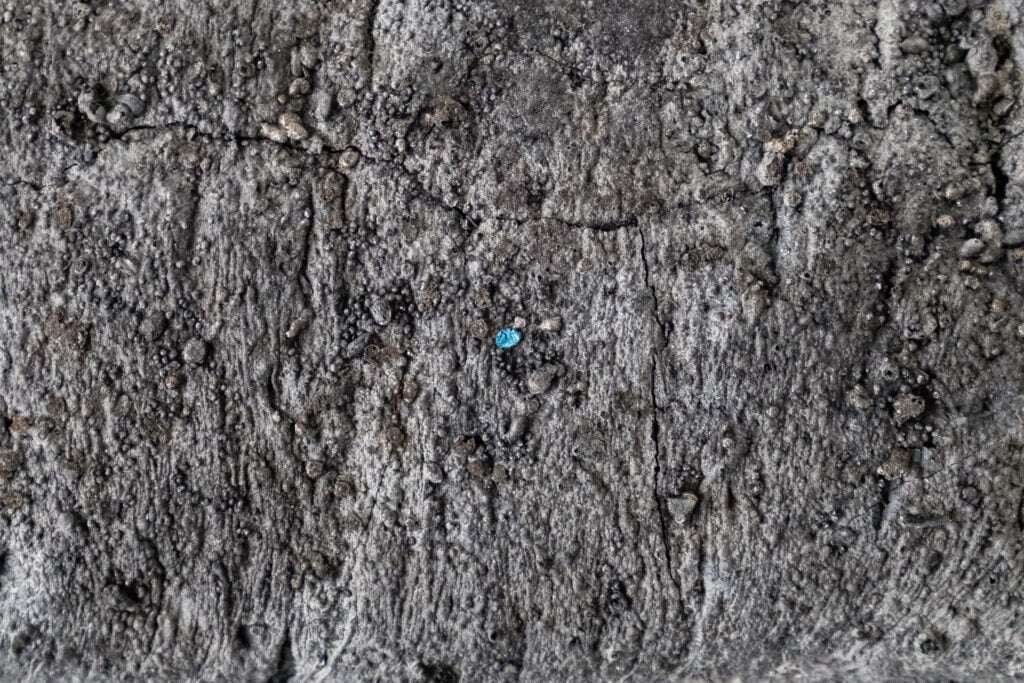Poem by Juana Adcock. Illustration: Fadzai Mwakutuya; photo: Ewan Bush
This is from #2 of LESS – our journal of degrowth, radical sufficiency and decolonisation in Scotland. Details of how to get a print copy here.
Steel
I place my palm en la reja called border wall.
Let its steel enter my body: iron alloyed with carbon
hardened to prevent the movement of dislocations.
I am in Tijuana, looking at California through the bars
though it isn’t clear where the prison lies.
To my left the bars peter out into an ocean
whose waves refuse to be contained.
The body of an adult human
contains about four grams of iron;
all four of mine rush to meet la reja imantada.
When we speak of magnetism,
we think of love, or charisma,
or crowds of faces all in one direction.
But never of iron as the metal
at the active site of many enzymes
dealing with cellular respiration
or the pull towards a ‘better life’.
Glasgow’s sandstone tenements, incidentally,
are red because they contain iron.
Our blood stone is iron ore.
It emanates its own light.
We are the blood, migrating
bringing cargo
from one cell to the next
keeping the body alive, we transport
mercancía
maquinaria
manos
más.
The iron for the wall was mined in the M states
bordering with Canada.
Not that long ago, the land was cleared
of its people, wildlife and forests.
Migrants from Europe fed the logs down the rivers
laid the train tracks
peeled away life on the topsoil
bloodlet the earth to build
this line of steel
marking the limits of possession.
Praying from Carnegie’s Gospel of Wealth
which built an empire of steel
repeating that this was progress
away from universal squalor
we were able to steal our eyes away
from the impoverishment
of the lands
—now empty red pits
gaping red wounds
as far as the eye can see.
The Letter M
With a guru’s moustache and a penchant for conspiracy
the madman explains to me that language is a form of mind control
the grammar itself holding us in a bind
– an incantation muttered over millenia
shaping our thoughts.
I want to master the art of the pictogram, he says.
It is the earliest form of writing
is uncontaminated by the misers, the drive for accumulation
created with the rise of agriculture.
The letter M, for example, is the pictogram of a wave
we forget where it comes from, it loses all meaning
we write it over and over without ever thinking of water
or how maritime and motherly,
muro y morada are of one essence.
As he speaks, I watch the surfers glide along the lip of the perfect breakers
almost for the whole line of the horizon
before they topple over into the sea
like tiny plastic soldiers.
That night we slept hearing the waves crash onto the rocks
and in the morning, we knew we were rocks too.
Our hearts, hardened lava.
The Pacific had smoothed round windows through us
and like a Barbara Hepworth sculpture
we were made whole
by what we lack.
Storylines
Roads are heavier on the rich side of the line.
Asphalt mixed with cement is whiter
loudening under car wheels, it hardens over time,
requiring little maintenance.
Such are the roads of the first world.
But the dwellings there are transient
wooden-framed and lighter
as if to be filled with
cushions and the crinkle of food wrappers
and some child’s quiet voice in a corner of the room
mouthing
and I’ll huff
and I’ll puff.
On the other side of the line
the asphalt grows crocodile-skinned.
Pockmarked and permeable,
it can cope with earthquakes
and melt in the sun.
Initially it’s cheaper to lay
but has a shorter lifespan.
Such the roads of the third world.
But here, our houses
you can tell by just looking at them
are made of cement, heavy as pyramids
as if to hold us at home
for longer.






